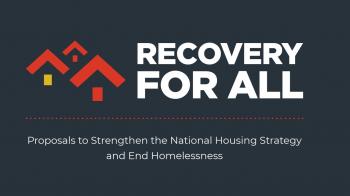Summary
Local Journalism Initiative Reporter
Windspeaker.com
A new report released on July 16 by the Canadian Alliance to End Homelessness (CAEH) is calling for the creation of a distinct urban and rural Indigenous housing and homelessness strategy.
Recovery for All: Proposals to Strengthen the National Housing Strategy and End Homelessness follows on the heels of a June 25 report, The State of Women’s Housing Needs and Homelessness in Canada. That report called homelessness a “uniquely dangerous situation” for Indigenous women, with data showing Indigenous women are 15 times more likely to use a shelter in the period of a year, compared to non-Indigenous women.
“We’ve recognized that there’s a unique and specific need for dedicated Indigenous housing, run and led by Indigenous people,” said CAEH president and CEO Tim Richter.
The Recovery for All report calls for more autonomy for Indigenous homelessness strategies, a direct result of those findings in June.
“The estimates in the report are based on what we know about Indigenous homelessness, but also understanding that homelessness for Indigenous people and women can be hard to enumerate, so there’s flexibility within our proposal to move that number up and down depending on the need,” said Richter.
The report’s six-point plan recommended that the National Housing Strategy (NHS) dedicate 30,000 housing units for urban Indigenous housing.
According to a section on expanding the non-market housing supply for Indigenous peoples, “there is also a need to fund, rebuild and extend the capacity of Indigenous provider organizations to enable expansion of housing options dedicated to the Indigenous population.”
Other key recommendations to improve the current NHS zeroed in on the need to specify who exactly benefits from funds and resources. The report recommends the current Canada Housing Benefit be targeted towards people who are at the greatest risk of homelessness or already homeless.
“Most of the housing in the NHS isn’t affordable to those of the greatest need,” said Richter.
Those of the greatest need include people who currently spend more than 50 per cent of their income on rent.
“If our plan was implemented we think at least 300,000 households would be prevented from entering homelessness over the course of 10 years,” said Richter, “and you would see Indigenous people and women highly represented because of the tendency of these folks to be among those in the greatest housing need.”
CAEH believes that while COVID-19 has shown how significant homelessness is, it has also exposed an opportunity to tackle this crisis, such as redirecting the $175 million federal COVID-19 funding for emergency responses to housing into community-based responses to eliminate homelessness.
The report also advocates for the creation of a separate $75 million funding stream specifically for women, children, and youth who are at risk of homelessness.
While the NHS aims to reduce homelessness in Canada by 50 per cent by 2030, CAEH says that it’s possible to eliminate chronic homelessness in Canada by 100 per cent if the recommendations are followed.
“Recovery for All is a campaign we’ve launched to ensure things never go back to the way they were before COVID-19,” said Richter. “Going back to normal means that 235,000 different Canadians are homeless every year.”
The report was commissioned by CAEH and authored by Steve Pomeroy, senior research fellow at Carleton University Centre for Urban Research and Education (CURE).

